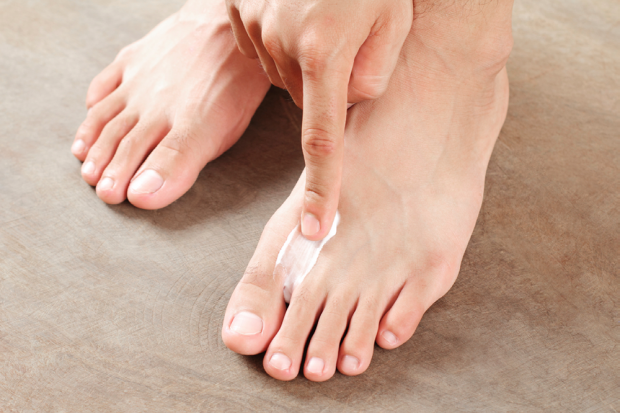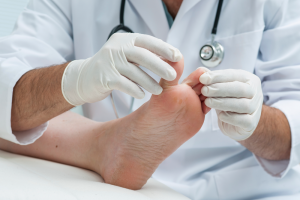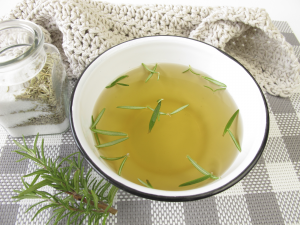Fungus Free How to Treat and Cure Athlete’s Foot: Home Remedies + More
Athlete’s Foot is a common fungal infection that must be treated quickly and effectively to stop it in its tracks and prevent it from coming back.
Athlete’s Foot, called tinea pedis in the medical world, is a common fungal infection of the foot that can cause uncomfortable peeling, redness, burning and blisters. It’s a contagious infection that can be tough to get rid of, meaning prompt action is necessary to keep it from wreaking havoc on your feet and spreading to others.
Symptoms of Athlete’s Foot
The most obvious signs that you may have Athlete’s Foot include peeling, itchiness, redness and burning on the foot, especially between the toes and on your soles. Sometimes blisters and sores are present. When left untreated or if you pick at the infected skin, Athlete’s Foot can spread to your hands, groin and other parts of your body. Additionally, it can spread to other people via the floor, towels and clothing.
There are four types of Athlete’s Foot and each is characterized by its own set of symptoms.
- Interdigital: This is the most common type of Athlete’s Foot and usually occurs in the web area between your two smallest toes. It causes itching and burning and is frequently mistaken for eczema.
- Plantar (Moccasin): Minor irritation, dryness and peeling are the usual first stages of this type of Athlete’s Foot, which then can start to spread to the soles of your feet and up the sides of your feet.
- Ulcerative: Macerated lesions on the foot that have scaly borders is the most common sign of Ulcerative Athlete’s Foot.
- Vesicular: This is the least common type of Athlete’s Foot and is characterized by a sudden outbreak of fluid-filled blisters that usually occur on the underside of the foot, but can occur anywhere, including between the toes. It is often complicated by a secondary infection of Streptococcus pyogenes or Staphylococcus aureus.
Athlete’s Foot is a dermatophyte, which is a type of fungus that requires keratin from hair, skin and nails to grow. It is commonly confused with ringworm (tinea corporis), but the two are not the same thing.
Common Causes of Athlete’s Foot
Contradictory to popular belief, you do not have to be an athlete to get Athlete’s Foot. In fact, the infection is a very common condition that affects all kinds of people because of its ability to spread quickly and easily.
There are four different types of mold responsible for Athlete’s Foot — Epidermophyton floccosum, T. rubram, T. mentagrophytes and T. tonsurans
— and they all thrive in warm, wet environments like gyms, public showers and swimming pools, locker rooms and wet socks.
You’re at a high risk of developing Athlete’s Foot if you visit these places without wearing protective footwear like flip flops, if you wear damp socks and/or tight fitting shoes, you share clothing, shoes, towels, bed linens and other materials with an infected person and if you have a weakened immune system.
Treatment of Athlete’s Foot
Doing any kind of Internet research on sites like WebMD, Medicinenet and Medlineplus will show you that curing Athlete’s Foot is not an easy process because of its tenacious ability to recur after treatment.
If you visit a clinic, a doctor will most likely take a skin sample in order to properly diagnose the condition and rule out other conditions that can cause similar symptoms, such as psoriasis, eczema and keratolysis. He or she will then probably prescribe an antifungal like Ketoconazole or suggest a less aggressive over-the-counter topical treatment like hydrocortisone cream or Lamisil, both which fight against fungal infections.
RELATED ARTICLES:
Home Remedies for Athlete’s Foot
If you choose to fight Athlete’s Foot on your own, there are many home remedies you can try. However, keep in mind that dermatophytes can be stubborn, so if you don’t see signs of improvement within a couple of weeks — or if you have diabetes or experience a fever and drainage — see your doctor right away. Also keep in mind that Athlete’s Foot can easily travel to other parts of the body, so do not pick or scratch at the infection, which can increase your chance of developing the infection elsewhere on your body.
How to Prevent Athlete’s Foot
There are a number of actions that can be taken to greatly reduce your chances of being infected with Athlete’s Foot, including:
- Wearing sandals or flip flops in public areas like locker rooms, gyms and swimming pools
- Keeping your feet clean and dry at all times
- Keeping each toenail cut short and straight across, and using separate clippers for infected nails
- Wearing socks made out of moisture wicking fabric and being sure to change your socks every day
- Wearing breathable, comfortable shoes that you rotate so as not to wear the same pair two days in a row
- Using powders like cornstarch or baby powder on the feet to keep them dry
How to Reduce the Chance of Spreading Athlete’s Foot
If you or a family member has already been infected with Athlete’s Foot and you’d like to reduce the chance of spreading the contagious infection, be sure to clean bathtubs, showers, bathroom floors, sinks and counters with Chlorine bleach, which is a disinfectant that kills mold. You should also avoid sharing clothing, towels and bed linens until the infection is gone.
Notice concerning medical entries:
Articles having medical content shall serve exclusively for the purpose of general information. Such articles are not suitable for any (self-) diagnosis and treatment of individual illnesses and medical indications. In particular, they cannot substitute for the examination, advice, or treatment by a licensed physician or pharmacist. No replies to any individual questions shall be effected through the articles.







